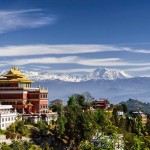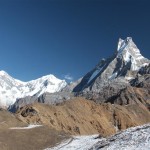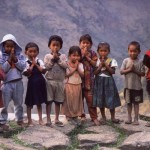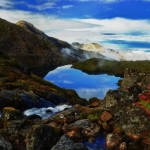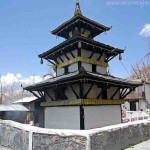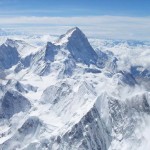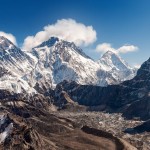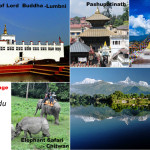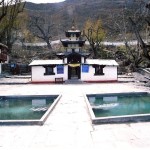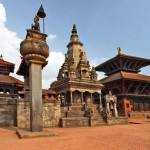FAQs
How do I get Nepal visa?
Nepal visa can be obtained upon arrival at the Tribhuvan International Airport and other border entry points (Kakadvitta, Birgunj, Bhairahawa, Nepalgunj, Gaddachowki on the Nepal-India border and Kodari on the Nepal-China border).
Outside of Nepal, A visa can also be obtained at the nearest Nepal Embassy or Diplomatic Mission or consulates offices
VISA REQUIREMENTS
A valid passport and one passport -size photo with a light background.
Visa can be obtained only through payment of cash in the following currency: Euro, Swiss Franc, Pound Sterling, US Dollar, Australian Dollar, Canadian Dollar, Hong Kong Dollar, Singapore Dollar and Japanese Yen.
Credit card, Indian currency and Nepali currency are not accepted as payment of visa fee.
- Tourist Visa Nepal
|
Visa Facility |
Duration |
Fee |
|
Multiple entry |
15 days |
US$ 25 or equivalent convertible currency |
|
Multiple entry |
30 days |
US$ 40 or equivalent convertible currency |
|
Multiple entry |
90 days |
US$ 100 or equivalent convertible currency |
Do I need have experience of hiking to go on a trek?
Not really, if you are physically fit and doing normal exercise then you do not need previous experience. We highly recommend you to walk at least 1 hour daily for 15 days prior to your trek.
Would it be risky to trek without a guide?
Nepal is one of the safest place on earth to visit and surely you can go trek without a guide. There are very rare cases recorded in terms of loot and robbery and mostly happens with the solo travelers. Hence, we strongly recommend to hire a guide in order to follow correct route and to have appropriate overnight stops.
What if I get sick or injured on the trek?
Our crew member will analyse the situation and suggest either you continue further or evacuate by Helicopter to Kathmandu. Our crew member will have first aid kit box and definitely prescribe some medicine and as far as possible we will take you to the dreaming destination or suggest you to alternatives.
What type of food I can have during trek?
Well, in most of the trekking area Veg & Non-Veg meals are available. Dal Bhat (Lentil & Rice) is very popular Nepalese dish in Nepal. If you haven’t tried yet, then this will be best opportunity for you to taste and fill your appetite. Some other choices are also available such as soup, porridge, Muesli, pasta, fried potato, Pizza, fried rice, spring roll, egg and many more.
Please drink boiled water throughout the trek.
What is altitude sickness?
Altitude sickness or acute mountain sickness is the pathological effect on humans due to rapid ascent to higher altitude. Which occur above 2400m due to decreasing amount of oxygen level.
There are mainly three types of altitude sickness: acute (mild) altitude or mountain sickness, high –altitude pulmonary edema and high-altitude cerebral edema.
Early Symptoms
Headaches
Fatique
Insomnia
Later symptoms
Shortness of breath
Extreme fatique
Cerebral edema
Coma
Death
Hence, our experience guide will give you proper advice whether you continue further, take rest or return back to Kathmandu or change the route.
How cold will it be?
Depending upon the season weather varies significantly. September to December and March to May are the best season to trek in Nepal. Morning and evening will be little bit cold and the day will be mild. Mountain weather varies depending upon the altitude. Above 3000m you will feel cold in the evening and morning even if it is a sunny day.
Please contact us for detail information and update.
Can I call my home or my work place?
Most of the well-developed tour or popular trekking destination have telephone network access like, Kathmandu, Chitwan, Lumbini, Pokhara, Daman, Palpa, Jomsom, Nagarkot, Dhulikhel, Bandipur, Annapurna region, Everest Region, Langtang region, Mustang and many more.
How much money do you recommend to bring?
It is quite difficult for us to say. There are so many things to do, buy and experience in Nepal. As per our experience we have met and escorted hundreds of thousands of tourists in Nepal and they used to say things are quite cheap in Nepal including food in local restaurants. Usually extra money is required for visa, Lunch and dinners, tips, hot water in trekking, hire or buy trekking gears if required, entrance fee at the monuments, buy souvenir’s, emergency evacuation and more.
How hard the trek will be?
Totally depends upon the trekking region you are planning to go for. Normally walking time will 4-6 hours daily or sometimes it will be quite longer. Please ask us to detail information.
Can I arrange an extension trip?
Yes of course, depending upon the number of days you have you can extend the trip. We can arrange the activities of your interest and preference whatsoever available within Nepal, Tibet, Bhutan and India.
Do I need to carry luggage on the trek?
So far very little like drinking water, light clothes, camera etc. Porter will carry your luggages and other belongings. Kindly check with us while you book trip with us. In case of Mountaineering you should be able to carry 15-20 kg on you own.
Can I join a group trek?
Of course if we have any scheduled departure date depending upon the group size or you can join private group as well if they allow to join them.
What is the maximum weight allowed on domestic flights?
In most of the carrier in domestic flight, weight limit is 15 KG.
How many extra days should I keep if I am going for trekking in mountain region etc?
If you are planning to trek for mountain region like Lukla, Jomsom, Simikot, Juphal, Taplejung, Phaplu and Dolpo then we suggest you to keep at least 2/3 spare days before your departure.
Is a trekking permit compulsory?
Yes it is. We are proud to say that most of the trekking routes in Nepal lies either in National park or in conservation area or in wildlife reserve. Hence, you must have the permit to enter into the region. For restricted area, the government of Nepal issue special permit.
What do I need to bring?
- Clothing Lightweight Trousers
- T-shirts
- Socks (4/5 pairs)
- Hat & Gloves
- Long Johns, Pants & Vests
- Warm trekking trousers or salopettes
- Fleece Jacket or Sweater
- Windproof over trousers and Jacket (Gore-Tex is ideal)
- Shirts (ski type ideal)
- Duvet Jacket (can be hired in Kathmandu)
- Footwear Good comfortable walking boots for day wear
- Sandals/trainers for evenings
- Equipment Kit Bag/Rucksack
- Down Sleeping Bag (can be hired in Ktm)
- Good Alpine Sunglasses (Glacial type)
- Sunglass & sunscreen (UV rays protecting)
- Comfortable trekking shoe
Can you advise on drinking water in Nepal?
Purified drinking mineral water is available in city area and we suggest you to drink boiled water during trek or to carry water purification tablets to purify locally available water.
What is the best season to trek in Nepal? Can I go trekking in June and July?
There are mainly 4 season in Nepal: Spring (March – May), Summer (July – August), Autumn (September – November) & Winter (December – February). We used to tourism in Nepal is for all season and all reason. We listen to your choices and preferences and design itinerary to meet your expectation. Normally, in summer season chances of rain fall will be high and at the same time if you love greeneries, foggy weather, rainfall then this is best time to travel and trek. We suggest you to trek in lower elevation.
What is Camping trek?
Camping trek is fully supported and organized trek. In such type of trekking all the camping gears including food items will be carried by porters. Such trek will be little bit expensive then teahouse trek as more manpower will be necessary to carry the load.
How many types of trekking you can arrange?
We can organize Teahouse or camping trek depending upon facility available at the particular destination.
What about the trekking grades in Nepal?
In Nepal there are various types of trekking routes ranging from easy to Moderate and strenuous. Depending upon the altitude trekking grades varies. Kindly consult with us for detail information and assistance.
What is Trekking?
Trekking is the best adventure and popular activities in Nepal among the traveller. It is simply a gentle walk from one place to another overlooking the beautiful sceneries, cultural variations and mountains.
What type of insurance should I have before I come to Nepal? Can I get it there?
We strongly recommend you to have travel insurance whenever you plan to travel in you country. Travel insurance is compulsory for trekkers to get the permit and at the same time it will help you to cover the cost in case of emergency medical evacuation. Choose a policy that covers emergency repatriation including helicopter evacuation for trekkers and medical emergency.
Why use a Guide?
Well, it is obvious that we cannot force you to keep the guide and it is not compulsory but they will definitely guide you properly. All the guide we have been using for tour and trekking are government license holder as they will be trained by government. Trekking guides will have the knowledge of First aid, geography, trek route, mountain culture and many more. Using is a guide means proper assistance and control over your safety and security.
What is the food like?
Nepal is home to many food items. Most popular food item in Nepal is Dal (lentil) – Bhat (rice). Newari & Tibetan food are also popular in Kathmandu and urban area. Many restaurants offer Continental, Italian, Chinese, and many other choices to you.
Mainly in trekking area, Dal – Bhat is one of the popular food item. There will be other choices too as alternatives such as Pizza, soup, pasta, spaghetti, chicken item, and more.
What is maximum cash that US carry into Nepal?
As per our custom department a tourist can carry up to USD 2000 or equivalent foreign currency and exceeding USD 2000 have to declared from custom department. You can use Master card, American express card, VISA card, SCT network card.
